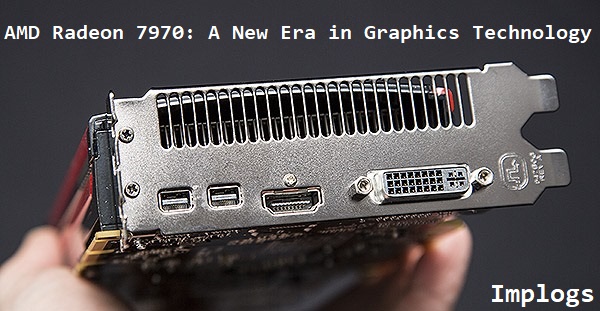7970 AMD Radeon
AMD today launches the Radeon HD 7970, marking a significant milestone as its first graphics card built with a 28nm production process and the debut member of the Southern Islands family of GPUs. The 7970 AMD Radeon steps in as the successor to AMD’s previous fastest single-GPU card, the HD 6970, and it brings a host of impressive upgrades.
The HD 7970 sees a substantial increase in transistor count, jumping from 2.6 billion to 4.3 billion. The engine clock speed has been boosted from 880MHz to 925MHz, and the number of Stream processors has surged by 33%, going from 1,536 to 2,048. VRAM has also seen an upgrade from 2GB to 3GB, supported by a 384-bit memory interface that delivers a bandwidth of 264GBps. However, the most crucial enhancement lies in the internal architecture. The new Graphics Core Next setup is designed to unlock the card’s potential for performing more computational tasks (i.e., GPGPU) without compromising its gaming performance.
In addition to these improvements, the 7970 AMD Radeon introduces several new features, including compatibility with PCI Express 3.0 and DirectX 11.1, making it the first card to support these new standards. AMD has also rolled out its innovative ZeroCore Power Technology, which is part of an advanced power management system. The HD 7970 is the first AMD GPU capable of accurately monitoring its power draw and intelligently downclocking to stay within power limits, as explained by AMD’s Zvika Greenstein. This allows for an aggressive default speed of 925MHz and promises exceptional overclocking potential.
“I really encourage you to overclock this card … The clock speed that you will hit will be well above 1GHz,” Greenstein stated.
Most retail graphics cards are built to withstand maximum loads for extended periods, but only synthetic benchmarks typically push them to such extremes. Games demand full power far less frequently, which is why a higher clock speed that might not hold up under stress tests could still enhance performance in games like Battlefield 3. With AMD’s new dynamic power management technology, users can set higher clock speeds without worrying about system stability.
The ZeroCore Power feature introduces a new idling mode, significantly reducing idle power consumption to 15W when displaying content on screen and less than 3W with a black screen. This feature is particularly beneficial for those with CrossFire setups, where the secondary video card will consume just 2.6W (with its fan off) when not in use. Despite these advancements, the maximum power consumption for the 7970 AMD Radeon remains at 250W, the same as its predecessor, the HD 6970.
Conclusion
The 7970 AMD Radeon represents a significant leap forward in graphics card technology, offering increased performance, efficiency, and new features that set a new standard in the industry.
